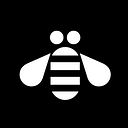Culture. People. Process. Every designer should think about
Designing for digital transformation
Digital transformation takes more than having exceptional software. IBM CEO Arvind Krishna wants IBM to be a world class software company that helps companies through their digital transformation journey. While there is emphasis on providing exceptional technology and user experience, technology is only part of the solution. Design professionals such as UX Designers and UX researchers play an integral part in this mission, but if we only focus on improving the user experience, we might be missing the mark on what is really needed for digital transformation.
In addition to the technology, the organizational culture and people are key ingredients for transformation. Without the proper consideration of these three areas, digital transformation is doomed for failure (English, 2023; Hoque, 2023). The strength between new technology (eg. our software solutions) and a company’s organizational and social structures might be the difference between adoption and rejection of the products we offer to market. We need a way of thinking about our design solutions in the broader context, considering the processes, people, and cultures of the companies we design them for.
A moment of clarity
“Every company has cultural, procedural, and relational elements that shape business decisions, team collaboration, and more.”
In the last 5 years as a UX researcher supporting several products, I’ve heard fascinating behind-the-scenes stories from IT professionals and product managers at every level. I recall one healthcare CTO lamenting not having the kind of operational insights he needed to drive efficiency and creative problem solving of new business challenges.
Even stories from sellers revealed a common reality for many companies. “Some companies are just not ready” one Tech Sales leader said. Despite clients expressing excitement of new capabilities we were offering, they often lacked the prerequisite infrastructure, skills, and practice needed to get immediate value.
“Every company has cultural, procedural, and relational elements that shape business decisions, team collaboration, and more” said Jacob Yackenovich, Program Director for Product Management for Watson AIOps. If this is the case, then how can we use that insight to drive our design solutions forward? How can we unlock the kind of transformation that CTO and others alike want to pursue? Having an awareness of IT maturity, organizational structure, and the skillset of IT personnel can be used to inform our user research findings, design solutions, and even better, a go-to market story.
I am proposing a framework for understanding organizational culture, the social norms and behaviors within company, and the processes supporting the work. By examining user’s needs through the lenses of Culture, People, and Process, can enable design professionals to:
1. Identify underlying reasons for sluggish sales cycles and product non-adoption.
2. Identify factors that strengthen or weaken the relationship between layers.
3. Identify other opportunities to solve a problem for a client. It might not be software at all.
Case for a new framework
Why do we need another framework? The Culture, People, Process framework complements and extends user-centered methodologies; it is not meant to replace them. This is even more relevant nowadays with designers being asked to balance UX design with business goals and more.
There are some notable frameworks out there that offer a unique interconnected perspective towards product design. In 2019, a team of designers at IBM published the The Business of Design Field Guide to help design professionals communicate value of design work to business stakeholders (Huber, et al. 2019). Service blueprints from the Service Design discipline are great for seeing all possible frontstage and backstage actors across a user journey. McKinsey’s Purpose, People, Planet, Profit framework offers a way for cross functional teams to explore the compatibility of user experience, financial feasibility, social responsibility, and environmental impact (Sheppard, 2022) of a design solution.
Whilst these frameworks provide utility in connecting design up the ladder to business metrics and planetary impact, I believe what is missing is an understanding of the mindset of an organization, the social aspects within a company, and the processes that under-gird the work. The Culture-People-Process framework could be a starting point.
The framework breakdown
The framework shows a suggested relationship between each layer going from outer — more abstract, to inner — more concrete. Another way to think about this is: a company has a culture in which people exist in and supporting their work are tools and processes. Within each layer a design professional can generate a list of questions used during research engagements or internal product team meetings, which can be used to make sense of UX research data, measure UX/UI experiences, and potentially create a captivating value statement.
The Culture layer
Peter Messana from Forbes writes that culture is:
“anything that relates to customs and norms that naturally form within a company…leadership embraces these values and use them to guide their decisions and pass those ideals to their employees.”
Culture includes a company’s stance on innovation, technology, diversity, ethics, and transparency. An organization might be an early adopter of technology, completely behind the trend, or somewhere in between. Companies who live by the motto “move fast and break things” (e.g. Meta) will value and pursue innovation differently than companies that prioritize policies and procedures over anything else (e.g. government organizations). Having an understanding of different kinds of corporate culture (eg. Clan, Hierarchy, etc. For more details read: The 4 types of company culture, explained.), including a company’s ability to adopt new technology, provide more insight into the customs, norms, and values that might need to change for a newly proposed design solution to be adopted. A design professional can start by asking a few questions (but don’t stop at these!)
What is the existing organizational culture?
Does the culture support the change an executive is seeking?
How might our design solution promote a paradigm shift?
The People layer
The People layer encompasses things like relationships, motivations, skills, behaviors, and responsibilities. In this layer, design professionals can ask questions to learn about team structure, stories, employee motivations and concerns. These can be questions asked in interviews, during data analysis, or on internal team calls. Some questions to ask here are:
How do people work together?
Does in-fighting or finger-pointing happen?
How might our design solution improve relationships between individuals and teams?
The Process layer
Processes help individuals and teams work within an established set of rules and procedures. Processes can be fully automated, semi-automated, or manual. This is also the layer where technology (eg. software) sits. A design professional can ask these questions to illuminate lurking bottlenecks and hidden opportunities for efficiency. Some questions to ask here are:
How does an IT Operations team respond to critical events?
How does an organization review software to purchase?
How might our design solution improve a process?
Between people and process is usually where I see a design team’s greatest impact. We are really good at outlining pain points and designing out friction points to make all or parts of a workflow seamless and easy to use. Imagine what our impact could be beyond this level.
A quick nod to the Veterans Affairs Hospital
An example that comes to mind is about the Veteran Affairs Hospital. The VA Hospital needed to transform their business so they could address the medical needs of their veterans faster. Unfortunately, like most government agencies, it was riddled with outdated processes and technology, and a culture that was content with the status quo. As a result, mail-in insurance claims took as long as 2 weeks to be processed. With IBM’s help, the VA was able to reduce the time from 2 weeks to 1 day! Simply providing a new software solution was not enough. IBM needed to consider all the factors contributing to this user problem: What were the existing culture, people, and processes already in place, and what factors needed to change for a software solution to be adopted to deliver the best experience for veterans?
Digital transformation is not pipe dream especially if companies approach it correctly. Companies must take into account the role culture, their employees, and the technology plays in this pursuit if they want to create viable opportunities for success and growth (Digital Business, 2023). The VA Hospital is a great example showing how an alignment of those areas led to game-changing improvements in how they delivered value to veterans.
Design professionals have an opportunity to design for digital transformation. I challenge design professionals to see how design solutions drive change through the lenses of culture, people, and process. Does our design solution make a workflow or task more efficient? Does our design solution improve autonomy and collaboration? Does our design solution unlock the imagination of executives? The better we can answer those questions, the better we can communicate value of our design solution to practitioners all the way up to executives. We already consider people and process; we should consider culture too! After all, good design is good business.
References
- Boogaard, K., 2022; The 4 types of company culture, explained. https://www.atlassian.com/blog/teamwork/types-of-corporate-culture
- Huber, Bodas, et al., 2019; Business of Design Field Guide. 2019. https://w3.ibm.com/w3publisher/the-business-of-design
- Digital Business 2023; Synergy between culture and technology fuels purposeful business transformation. https://digitalisationworld.com/news/64636/synergy-between-culture-and-technology-fuels-purposeful-business-transformation
- English, L. 2023; Without the right culture, your digital transformation efforts will fell. https://www.forbes.com/sites/larryenglish/2023/03/21/without-the-right-culture-your-digital-transformation-efforts-will-fail/?sh=278d287c2f00
- Hoque, F. 2023; Reinvent: Navigating business transformation in a hyperdigital era. Fast Company Press.
- Messana, P. 2022; What is company culture. https://www.forbes.com/sites/forbestechcouncil/2022/03/11/what-is-company-culture/?sh=1fc4aa21279b
- Sheppard, B. 2022; Purpose. People. Planet. Profit. https://www.mckinsey.com/capabilities/mckinsey-design/how-we-help-clients/design-blog/purpose-people-planet-profit
Special thanks to Kara Kotwas , Justine Banbury, Karel Vredenburg and Joni Saylor for taking the time to not only listen to my idea but to also provide detailed comments and feedback. This blog post wouldn’t have seen the light of day without your help. Thank you so much!
Roosevelt T. Faulkner is a UX Research Lead at IBM based in Austin, TX. The above article is personal and does not necessarily represent IBM’s positions, strategies or opinions.

